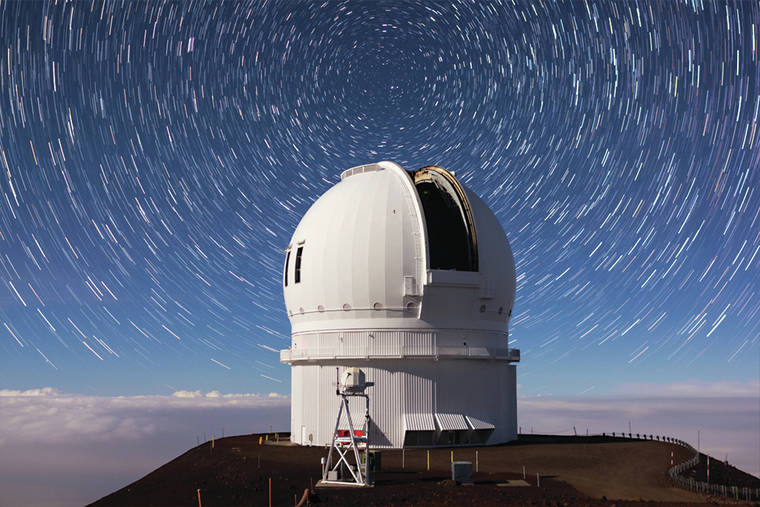Telescope confirms asteroid not a threat
Maunakea observatories returned to work last weekend and almost immediately discovered that the world will not end next year.
On Saturday night into Sunday morning, the Canada-France-Hawaii Telescope returned to operational status after four weeks of non-use and astronomers were able to confirm that an asteroid near Earth will not strike the planet next year or within the next century.
ADVERTISING
The asteroid, designated 2006 QV89, had previously only been observed between its discovery on Aug. 29, 2006, and Sept. 8 of that year. That observation window was not sufficient to entirely rule out a possible collision with Earth next month, however.
The European Southern Observatory’s Very Large Telescope in Chile ruled out such a collision last month when it scanned the skies where the asteroid would appear if it were to strike the Earth in September and did not detect it. However, the potential trajectories of the asteroid indicated that an impact in 2020 was still possible, as well as 22 other potential impacts over the next century.
The asteroid is estimated to be roughly 30 meters in diameter, said David Tholen, an astronomer with the University of Hawaii’s Institute for Astronomy who led the effort to recover the asteroid’s trajectory. An object of similar size detonated in midair over Siberia in 1908, flattening nearly 800 square miles of forest in what is now known as the Tunguska event; a 20-meter diameter asteroid similarly exploded over Chelyabinsk, Russia, in 2013, damaging thousands of buildings in the area.
On July 14, Tholen said CFHT was able to rediscover the asteroid after imaging a wide area of the “uncertainty region,” the parts of the sky where the asteroid could potentially be.
“We got lucky that it was in there, but we had to confirm it was the one,” Tholen said. Dozens of other objects were also imaged on July 14, and only by analyzing their motion could 2006 QV89 be definitively identified.
Unfortunately, all observatory staff were removed from Maunakea on July 16 in response to protests against the planned construction of the Thirty Meter Telescope. Although the Very Large Telescope in Chile found an object that could potentially have been the asteroid during the Maunakea shutdown, the signal was ultimately too faint to distinguish from electronic noise.
After returning to work Saturday, Tholen said he was able to find the object once again and confirm that it was the missing asteroid.
“Only one object that we saw would have moved to the right position between July 14 and August 11,” Tholen said.
By analyzing the asteroid’s trajectory, NASA’s Near Earth Object Observations Program was able to confirm that the asteroid will not impact the planet within the next 100 years.
Tholen said the trajectory computations stop running after 100 years because the orbital trajectory of the object is more likely to be altered by other objects and reflected radiation.
“But for the next 100 years at least, we’ve ruled out any impacts from this one,” Tholen said, before ominously adding “There are others.”
Tholen said another asteroid, 2019 NX5, slipped away during the Maunakea shutdown and can no longer be observed by Earth telescopes.
Email Michael Brestovansky at mbrestovansky@hawaiitribune-herald.com.





